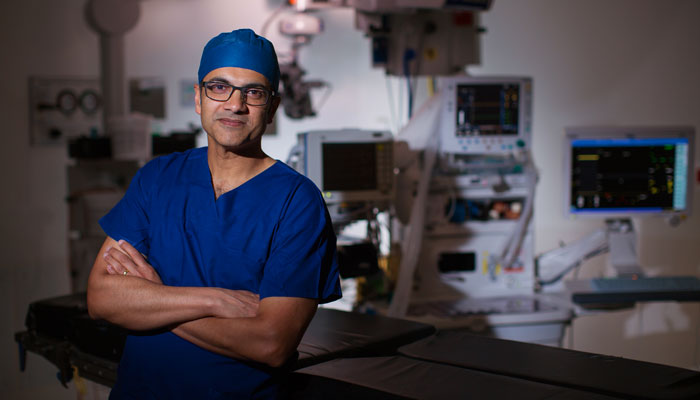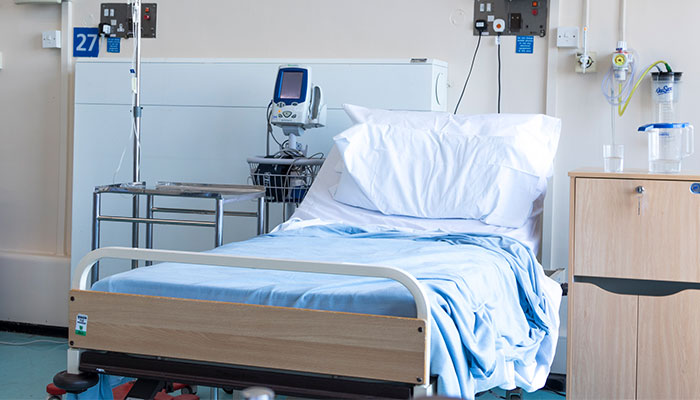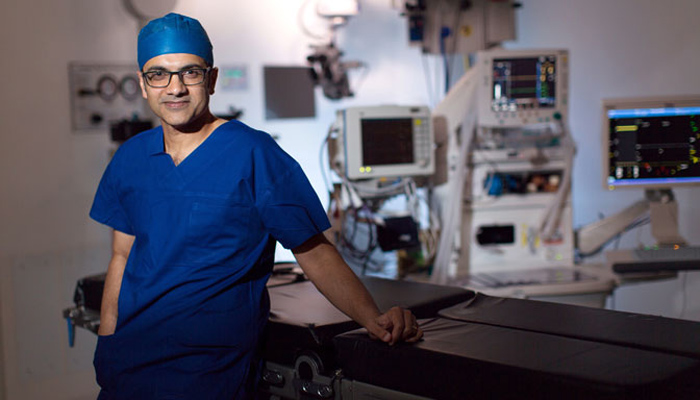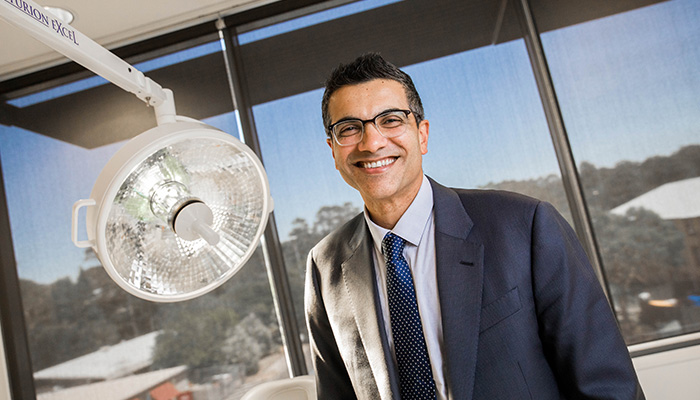As a surgeon, I must admit to feeling a little redundant when COVID19 hit our shores. Unlike the world wars, where surgeons were on the front line patching up soldiers and civilians brought in on stretchers, our biggest contribution to date is to defer non urgent procedures as a means of preserving vital protective equipment.

Act now: Professor Anand Deva, pictured, says contaminated furniture in hotel rooms and in enclosed dining spaces can be a source of virus infection and new pre-disinfection cleaning protocols should be urgently introduced particularly in aged care settings like Newmarch House.
This crisis needs our public health experts, epidemiologists, infectious disease physicians, virologists and intensive and critical care staff on the front line, ready to ensure that as many Australian lives are saved as possible.
Our curve has flattened and our mortality rate has remained low, a testament to their collective capable hands. We patiently await the numbers to fall and for the promise of a vaccine.
There has been, however, a blind spot – one that may explain the high rates of transmission in highly dense population centres such as Wuhan and New York City.
Fomites have been shown to be a significant source of infection, especially when you put a high concentration of infected patients into a closed space.
Whilst the virus can be transmitted from person to person, most likely by droplet and less likely by aerosol transmission, it is the potential vector from infected patient to the surrounding environment that has not been adequately addressed.
The medical term for surrounding objects, for example furniture, that become contaminated by an infective agent and subsequently act as a source of transmission is 'fomites'. Fomites have been shown to be a significant source of infection, especially when you put a high concentration of infected patients into a closed space.
- The coronavirus has changed work forever
- Australia's COVID-19 success so far: a victory for optimism?
We know this from more than two decades of research into hospital-acquired infection. Hospitals are quite dirty places. It turns out that if you put a group of sick and infected patients into hospital, the surrounding ward and its floors, furniture, beds, all become contaminated.
It is not just patients that are at risk, but also healthcare workers. Around 1 in 10 patients will pick up an infection from being in hospital and the route from fomites to patient is a significant one.
As COVID19 patients fill our wards and nursing homes, what do we know about the persistence of this virus in the environment?
Viruses can survive at least nine days
An early study examining the survival of the virus following aerosol sprays has shown that it can remain infectious at 72 hours and likes plastics and metals better than cardboard or cloth.

Hospital advantage: cleaning practices that control infections in hospitals need to be copied in cruise ship cabins, dining rooms, hotel rooms and aged care settings now to help stop the virus spreading through contact with infected surfaces, says Deva.
This is most likely an underestimate because in the real world, the virus is mixed with protein, for example blood and mucus, and can land on 'gunk' – accumulations of protein, slime and other rubbish that is already present on surfaces which have not been properly cleaned.
More recent work has shown that viruses (and bacteria) can survive for at least nine days (and most likely weeks) surrounded by this protective armour and that regular disinfectants may not be able to adequately penetrate the gunk to be effective.
Cleaning various nooks and crannies that accumulate gunk and grime should now become another front in the battle against COVID-19 disease. In hospitals, we are fortunate to have teams of infection control officers and well-trained cleaners but what about the rest of the community?
Who is there to clean the sheets, carpets, cushions, curtains, chairs and beds? Are the cleaners aware of the importance of cleaning first before disinfection/fumigation?
I am thinking of small apartments with sick patients, cruise ship staterooms and dining rooms filled with patients expectorating virus and protein, hotel rooms that potentially house an infected traveller who develops symptoms and more pertinently, cleaning at aged care facilities like Newmarch House.
We have heard that there are issues at Newmarch House with infection control that have now caused the second most deadly cluster of COVID-19 in Australia, after the ill-fated Ruby Princess. Who is there to clean the sheets, carpets, cushions, curtains, chairs and beds? Are the cleaners aware of the importance of cleaning first before disinfection/fumigation?
When the dust settles on some of the most serious hot spots for COVID-19, I predict that this blind spot will turn out to be one of the major routes of preventable community transmission.
We need to pay attention to this now, rather than read about it later in our scientific journals.
Professor Anand Deva is co-chair of the Surgical Infection Research Group at Macquarie University. SIRG has investigated hospital-acquired infection for more than two decades.
Twitter@saferimplants



